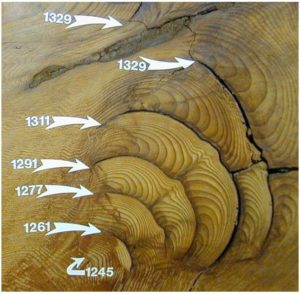by F. Bosse & N. Lewis, Feb 23, 2023 in WUWT
Not really.
A recent paper (M. B. Freund et al 2023, MBF23 thereafter) in “Nature communication earth and environment” investigates the variability of the summer drought events since 1600. It uses the method of “stable isotope analyses C13/O18” to extend the “Standardised Precipitation-Evapotranspiration Index (SPEI) from 1950 to now back to 1600.
The paper describes and uses a multi proxy network over large parts of Europe (see Fig. 1 of MBF23) to reconstruct the history of summer droughts for a longer historic period. It finds interesting results about the dependency of those events on volcanos and solar forcing. It’s a worthwhile read and we were interested in whether the headline title is justified and likewise this claim in the Abstract:
“We show that the recent European summer drought (2015–2018) is highly unusual in a multi-century context…”
Thanks to the authors the used SPEI reconstruction annual data are available, so we were able to perform calculations to check these assertions.
An apparent first “confirmation” of the headline title of the paper appears in Figure 3a in MBH23:
Fig.1: A reproduction of Fig. 3a of MBH23. Annual European mean SPEI-data in blue/red, the low pass filter output is shown in black.
…

